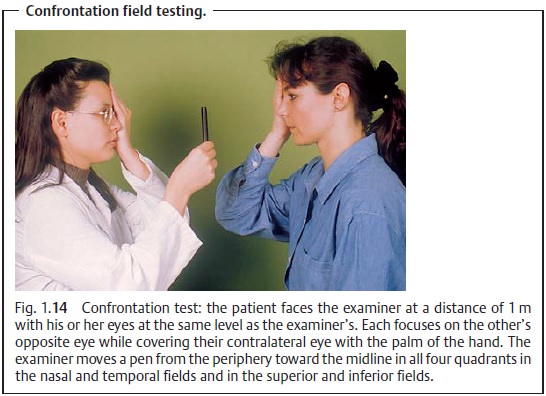Chapter: Ophthalmology: The Ophthalmic Examination
Confrontation Field Testing
Confrontation Field Testing
Confrontation testing provides gross screening
of the field of vision where perimetry tests are not available.
The patient faces the examiner at a standard
distance of 1 m with his or her eyes at the same level as the examiner’s (Fig.
1.14). Both focus on the other’s opposite eye (i.e., the patient’s
left eye focuses on the examiner’s right eye) while covering their
contralateral eye with the palm of the hand. The examiner moves an object such
as a pen, cotton swab, or finger from the periphery toward the midline in all
four quadrants (in the superior and infe-rior nasal fields and superior and
inferior temporal fields). A patient with a normal
field of vision will see the object at the same time as the examiner;
apatient with an abnormal or restricted
field of vision will see the object later than the examiner.
Confrontation testing is a gross method of
assessing the field of vision. It can be used to diagnose a severely restricted
field of vision such as homonymous hemianopsia or quadrant anopsia.

Related Topics